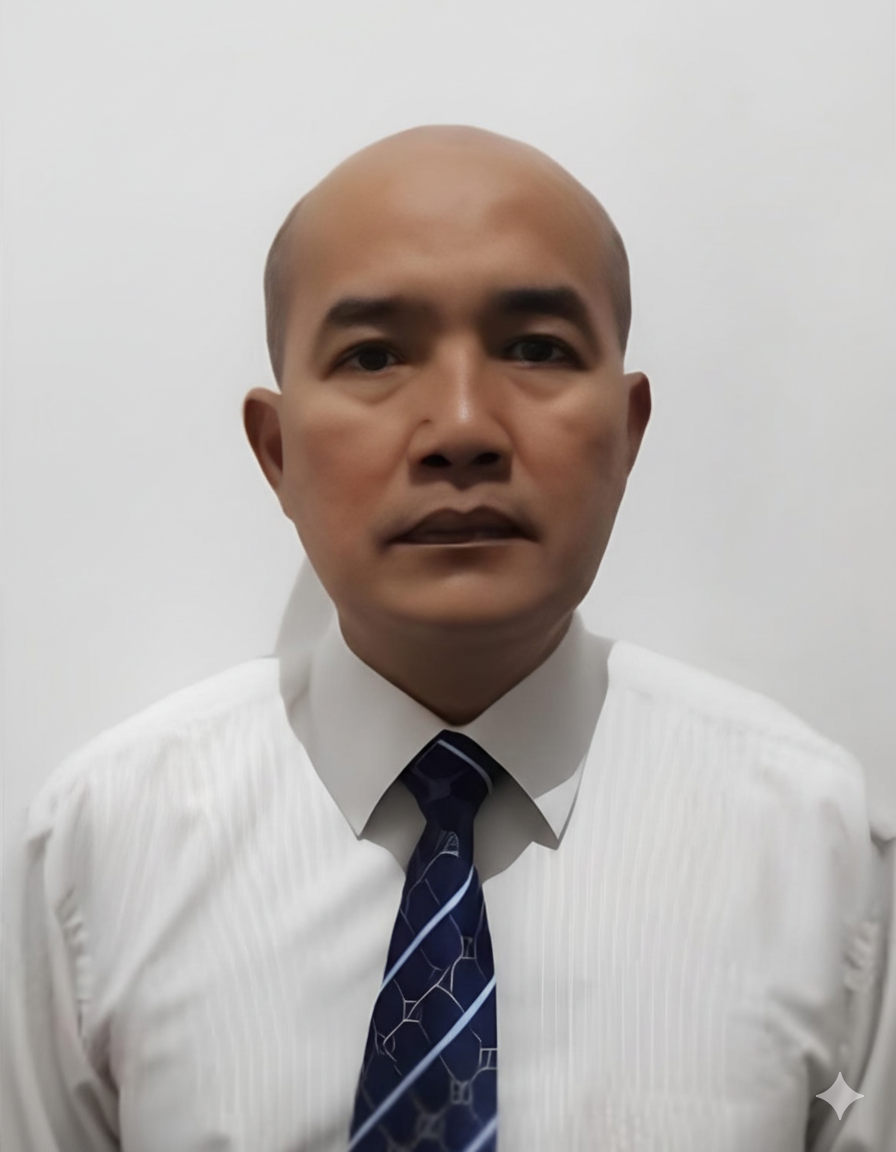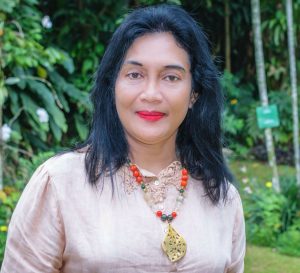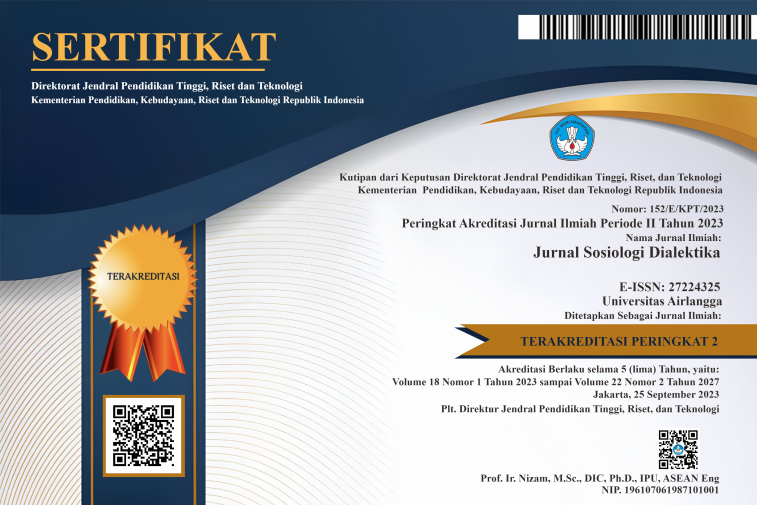Assessing the impact of the military coup on families in Sagaing Region: A case study of house burnings in Myanmar
Downloads
The military coup in Myanmar triggered a notorious uprising and subsequent armed conflict, resulting in military forces killing and imprisoning protesters, as well as setting fire to houses. This study employs a qualitative approach and uses James Scott's survival mechanism theory to analyze the hardships experienced by families in fire-damaged villages in the Sagaing region. Our findings reveal that military forces carried out targeted attacks and burned down houses, particularly in villages that supported the People's Defense Forces, leading to significant suffering among the local population. Families who were victims of this arson faced a host of challenges, including the loss of their homes and possessions, leaving them to seek shelter in the forest or makeshift tents, as well as food insecurity and a lack of access to medical care. Furthermore, many became unemployed as farming production costs were unaffordable and their children were unable to attend school. We highlight the urgent need for international humanitarian aid to address the dire situation faced by families whose homes were burned down by the military in Sagaing Region, Myanmar.
ACLED (nd) Continued resistance against the military coup. 10 Conflicts to Worry About in 2022, Myanmar. ACLED, Bringing clarity to crisis. [Accessed 13 December 2022]. https://acleddata.com/10-conflicts-to-worry-about-in-2022/myanmar/.
Ali F (ed) (2020) Global Encyclopedia of Public Administration, Public Policy, and Governance. Global Encyclopedia of Public Administration, Public Policy, and Governance, August 2019. https://doi.org/10.1007/978-3-319-31816-5.
Annan J & Brier M (2010) The risk of return: Intimate partner violence in Northern Uganda's armed conflict. Social Science and Medicine 70 (1):152-159. https://doi.org/10.1016/j.socscimed.2009.09.027.
Balima HW (2020) Coups d'état and the cost of debt. Journal of Comparative Economics 48 (3):509-528. https://doi.org/10.1016/j.jce.2020.04.001.
Barka HB & Ncube M (2012) Political fragility in Africa: are military coups d'état a never-ending phenomenon. African Development Bank 9 (9).
Bjí¸rnskov C & Pfaff K (2021) Differences matter: The effect of coup types on physical integrity rights. European Journal of Political Economy 69. https://doi.org/10.1016/j.ejpoleco.2021.102027.
Brinkman H & Hendrix CS (2011) Food insecurity and violent conflict: Causes, consequences, and addressing the challenges. Challenges 1-28. https://doi.org/10.13140/2.1.3379.2003.
Charney MW (2021) Myanmar coup: How the military has held onto power for 60 years. The Conversation 1-8.
Chen WT, Shiu C, Lee FR, Moolphate S, & Aung MN (2023) Infrastructure collapsed, health care access disrupted, Myanmar people with chronic diseases are in danger. Journal of Global Health 13. https://doi.org/10.7189/jogh.13.03002.
Coup AMSM (2022) Our Health Workers Are Working in Fear. Targeted Violence against Health Care One Year after Myanmar's Military Coup. January, 2022.
Creswell JW & Creswell JD (2017) Research Design: Qualitative, Quantitative, and Mixed Methods Approaches. London: Sage publications.
Data for Myanmar (nd) Non-profit organisation, @data4myanmar. https://www.facebook.com/data4myanmar/.
Denov M & C Shevell M (2019) Social work practice with war-affected children and families: the importance of family, culture, arts, and participatory approaches. Journal of Family Social Work 22 (1):1-16. https://doi.org/10.1080/10522158.2019.1546809.
Equal T & Trust R (2012) Burning homes, sinking lives a situation report on violence against stateless Rohingya in Myanmar and their refoulement from Bangladesh the equal rights trust. June.
Feng Y (1997) Democracy, political stability and economic growth. British Journal of Political Science 27 (3):391-418. https://doi.org/10.1017/S0007123497000197.
Gunawan Y, Amirullah MNR, Permana VGP, & Arumbinang MH (2021) Freedom of speech under international law: Myanmar's anti-coup demonstration violence case. JCH (Jurnal Cendekia Hukum) 7 (1):72-81. https://doi.org/10.33760/jch.v7i1.414.
Hamzawy A (2017) Egypt after the 2013 military coup: Law-making in service of the new authoritarianism. Philosophy and Social Criticism, 43 (4-5):392-405. https://doi.org/10.1177/0191453717695367.
Irrawaddy (2022) In one week, more than 20 villages in Sagaing Division were burned by the army. Irrawaddy News, 22 November. [Accessed 10 January 2023]. https://burma.irrawaddy.com/news/2022/11/22/256163.html.
ISP-Myanmar (nd) Home within two and a half months. Nearly 20,000 buildings were burned down. ISP-Myanmar. [Accessed 10 January 2023]. https://www.ispmyanmar.com/burmese/category/what-matters/isp-data-matters/.
Justino P & Verwimp P (2013) Poverty dynamics, violent conflict, and convergence in Rwanda. Review of Income and Wealth 59 (1):66-90. https://doi.org/10.1111/j.1475-4991.2012.00528.x.
Korf B (2004) War, livelihoods and vulnerability in Sri Lanka. Development and Change 35 (2):275-295. https://doi.org/10.1111/j.1467-7660.2004.00352.x.
Maizland L (2022) Myanmar's troubled history: Coups, military rule, and ethnic conflict. Council on Foreign Relations, 31 January. [Accessed 13 December 2022]. https://www.cfr.org/backgrounder/myanmar-history-coup-military-rule-ethnic-conflict-rohingya.
McKay S (1998) The effects of armed conflict on girls and women. Peace and Conflict: Journal of Peace Psychology 4 (4):381-392. https://doi.org/10.1207/s15327949pac0404_6.
Mennecke M & Stensrud EE (2021) The failure of the international community to apply R2p and atrocity prevention in Myanmar. Global Responsibility to Protect 13 (2-3):111-130. https://doi.org/10.1163/1875-984X-13020013.
Moseley WG (2013) Recovering from livelihood insecurity and political instability in northern Mali: Bouncing back. International Journal 68 (3):435-443. https://doi.org/10.1177/0020702013505435.
Osman AK, Ibrahim M, Elsheikh M, Karrar K, & Salih H (2021). Saving the Fundaments: Impact of a Military Coup on the Sudan Health System. Sudan Journal of Medical Sciences 16 (4):567-573. https://doi.org/10.18502/sjms.v16i4.9959.
Rahayu P, Adelina F, Kamal S, Nurramadan W, & Hadi C (2018) Mekanisme bertahan hidup (survival mechanism) Komunitas Percatu Tulungagung. Program Studi Magister Sains Psikologi Fakultas Psikologi Universitas Airlangga. https://doi.org/10.13140/RG.2.2.28580.17285.
RFA Burmese (2022). Thousands of homes burned by soldiers in Myanmar's Sagaing region. Many victims have been forced to live in tents in the forest as the rainy season starts. RFA (Raduo Free Asia), 25 May. [Accessed 10 January 2023]. https://www.rfa.org/english/news/myanmar/sagaingarson-05252022182104.html.
Satriawan I, Elven TMA, & Lailam T (2023) Internet shutdown in Indonesia: An appropriate response or a threat to human rights?. Sriwijaya Law Review 7 (1):19-46.
Saxena I (2021) Myanmar's military coup security: Trouble in Southeast Asia. Journal of Indo-Pacific Affairs 1 (8):46-55.
Strangio S (2022) Myanmar junta accused of ‘hostage taking' during sagaing raids. The northwestern region of Myanmar has become a hotbed of resistance to the junta. The Diplomat, 2 March. [Accessed 13 December 2022]. https://thediplomat.com/2022/03/myanmar-junta-accused-ofhostage-taking-during-sagaing-raids/.
Sharma V, Oo PP, Hollaender J, & Scott J (2021) COVID-19 and a coup: Blockage of internet and social media access further exacerbate gender-based violence risks for women in Myanmar. BMJ Global Health 6 (6):e006564. https://doi.org/10.1136/bmjgh-2021-006564.
Simpson A (2021) Coups, conflicts, and COVID-19 in Myanmar: Humanitarian intervention and responsibility to protect in intractable crises. Brown Journal of World Affairs XXVII (1):1-19.
Tenenbaum C (2005) International Crisis Group. Vacarme 30 (1):35-37.
US Department of State (2018) Documentation of atrocities in northern Rakhine state. 2-20.

This work is licensed under a Creative Commons Attribution-NonCommercial-ShareAlike 4.0 International License.
1. Copyright of this journal is possession of Editorial Board and Journal Manager, by the knowledge of author, whilst the moral right of the publication belongs to the author.
2. Legal formal aspect of journal publication accessibility refers to Creative Commons Attribution-NonCommercial-ShareAlike (CC BY-NC-SA), implies that publication can be used for non-commercial purposes in its original form (cannot be modified).
3. Every publications (printed/electronic) are open access for educational purposes, research, and library. Other that the aims mentioned above, editorial board is not responsible for copyright violation.















